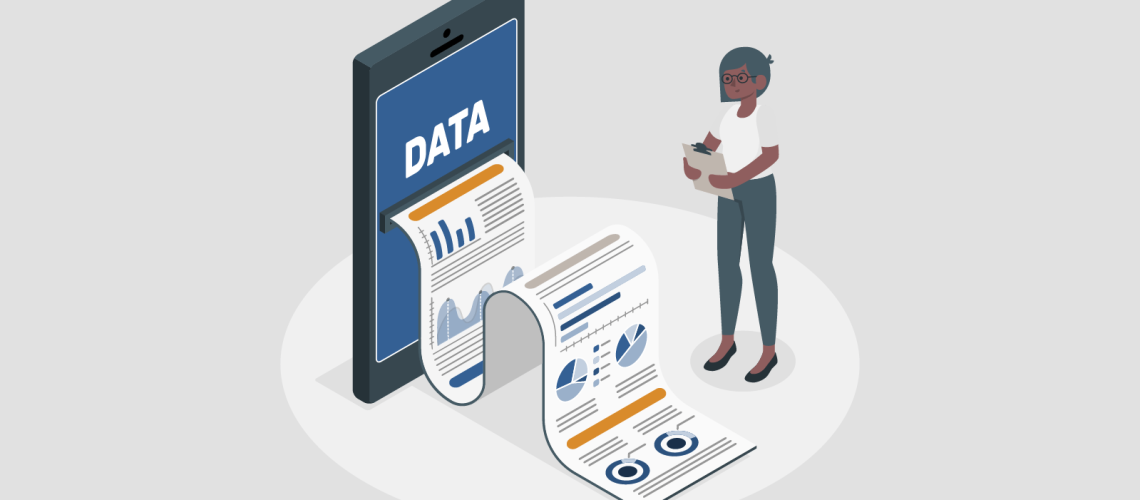Sections
- Introduction
- How Do You Plan to Use Your Data
- The Next Step in Your Data Strategy
- Defensive Data Strategy
- Offensive Data Strategy
- Conclusion
Introduction
Small and mid-market enterprises (SMEs) often lack the resources to go all-in on data. People need to make smarter choices on how to allocate resources. As you go through this blog to help you develop your data strategy, keep in mind the resources you have available to implement it. There is no benefit to plan on future actions that you cannot take.
Modern digital systems produce a lot of data and not all data is equally important to your long-term growth and success. You want to focus your resources on the most important things first. You can then build on this foundation step by step. This is iterative development, and we consider it to be the most cost-effective approach for most businesses.
How Do You Plan to Use Your Data?
You should have little doubt that data is important to your business. Each year the amount of data available just becomes larger and more vital to your business. Forbes reported that the amount of data created and consumed in the world increased by almost 5000% from 2010 to 2020. Whether your company faces a trickle or a torrent of data, you should have a strategic data plan on how to make the best use of it.
In the past, most companies did not bother to come up with data strategies. Usually, only large enterprises could afford to develop and implement a formal data strategy. These large and complex documents shaped the information available to smaller firms. It doesn’t have to be that hard to do.
You can achieve most data strategy benefits from a subset of the activities that large enterprises follow. A data strategy for a large enterprise can contain a massive amount of technical detail, with complex descriptions of technology to be used and business procedures to be followed. For a smaller firm, this is not where the benefit of a data strategy comes from.
The major benefit of a data strategy comes from having a business point of view. A business description of what data is important to your company, how you are going to use it to improve your business, and what resources you are going to allocate to implement it. Today no company can afford not to have a plan on how they use their data.
Where to Start Your Data Strategy
The start of your data strategy is always your business strategy. If your company has a formal business strategy or not, you probably know what is important to your business and where you want to take it in the future.
A strategy is simply the set of decisions and actions you plan to take to achieve these business goals. These will lead to the critical success factors you need to achieve those goals. Your data strategy is the set of decisions and actions you plan to take around the data that supports your business goals and objectives.
If your business strategy is to achieve the lowest cost for your customers, then your critical business data will be around your operations. If your business strategy is customer relationships, then your critical business data will be around your customers. No matter what business you are in, your financial transactions are always critical business data.
Do not limit yourself to what data you currently have. Also, think about data you would like to have based on what your business wants to achieve. The important concept here is that you know what data is most important to the future of your company.
The Next Step in Your Data Strategy
You should have clarity on where your company is in relation to what it is possible to do with data. Also, understand where your company is regarding data practice, and this will help determine what you should focus on. An article in the Harvard Business Review described a data strategy framework that is good to consider here. Your data strategy should have two focuses, one on defense and one on offense.
Data defense is about the activities you plan on taking to lower the downside risk your company faces from incorrect or incomplete data. Your data strategy for operational data should be all about control. These are business processes to ensure a single version of the truth that is complete, correct, and consistent across the systems you use in your business.
Data offense is about the activities you plan on taking to support your business objectives. These are activities that generate analytical insights into your company or customers. Your data strategy here is about flexibility and opportunity. Some companies call this their analytics strategy.
Basically, you shouldn’t be thinking about pursuing data science initiatives if you spend all your time trying to track down your sales transactions.
Struggling with your analytics journey?
Let Iteration Insights get you on the right path, view our services to see how we can help you today.
Defensive Data Strategy
One of the major uses of data is to improve your business processes and day-to-day operations to deliver a better service to your customers. Any activity that generates data can be a source of improvement.
What are the most important processes or activities tied to how you succeed as a business? What will have the biggest impact on your business if you could capture and use this data? Is it the sales process? Is it inventory control? Is it employee retention? Is it your gross margin? Is it your operating costs?
You need to think about what is best for your business in the future. You may not have the systems in place that allow you to make use of this data now. But your data strategy should guide the choices you make so that you can capture and use this data. To make sure that you support your business goals with the internal systems you are putting in place.
Every business also faces legal requirements, be it tax regulations, employment regulations, or other mandated reporting requirements. The data that goes into the reporting for these should always come first in your planning. You must capture and report this data correctly.
Your data strategy should discuss the business processes you will implement or improve to ensure a single version of the truth across the systems you use in your business. It isn’t necessary to go into great technical depth here; the goal is to shape the choices you make in the future to ensure you meet your business objectives.
At a minimum, cover the following processes:
- Data Governance
- Improvements to internal data standards and policies used to control data usage.
- Data Quality
- Data Profiling
- Data Matching
- Master Data Management (MDM)
- Customer Data Integration (CDI)
- Data Security
- Access Control
- Authentication Control
- Encryption
- Backup and Recovery
Offensive Data Strategy
Every company should work towards making better business decisions. Data can provide the insights needed to make those decisions. This makes use of your companies’ operational data but extends, shapes, and groups it to answer business questions and inform business decisions. Turning data into useful insights is analytics.
Going back to your business strategy, what processes are most important to meeting your business objectives? What business questions do you need to answer to support those objectives? Are you looking to increase revenue or customer satisfaction?
You first need to identify what business objectives you are looking to improve with data. You then consider what data you have to help improve these decisions and what sources are available to collect this data from. You are not going for all the technical details here; you want this from the business point of view.
Next, you need to consider how you are going to use and present this data. Is simple operational reporting going to be enough to improve the business? Or do you need to pursue more advanced analytics? The goal here is not to describe the technology to be used, but the approach you want the company to take.

Gartner Analytic Ascendancy Model
The data strategy for this kind of analytical data should be more flexible than for operational data as different business users have different criteria for business decisions. This means that multiple versions of the truth could exist, provided there is a valid data lineage back to the single version of the truth.
Conclusion
A lot of companies have an IT-centric view of their data. For your data strategy to work you must take a business-centric approach. The point of a data strategy is to help build a better business. You can spend far too much time focusing on the technology, but first, you must understand why and how your data can help your business.
When it comes time to implement a part of your data strategy, that is when technical choices will need to be made. The rate at which data technologies are advancing means that any technical choices made in your data strategy would probably be out of date. By focusing on your business objectives, you gain the benefits of having a data strategy that will work for you in the future.



